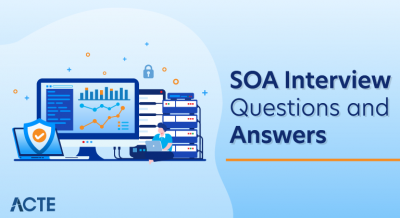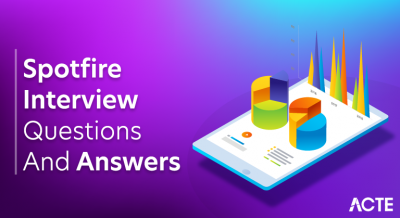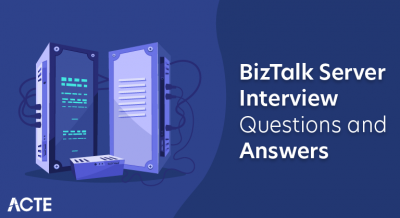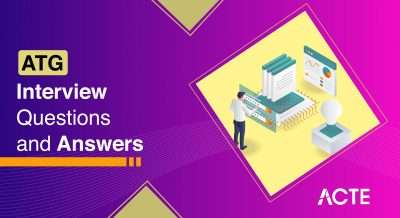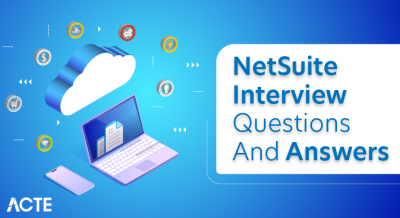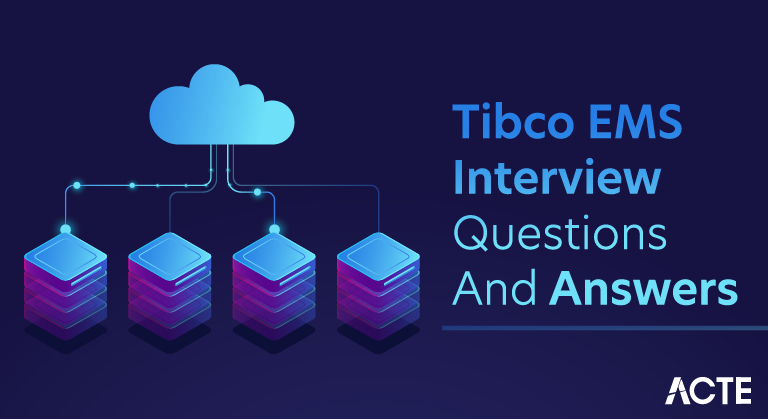
TIBCO Enterprise Message Service (EMS) is a robust messaging platform designed for facilitating communication and data exchange in enterprise applications. As a key component of the TIBCO integration suite, EMS enables seamless and reliable communication between disparate systems, applications, and services. Employing both point-to-point and publish/subscribe messaging paradigms, TIBCO EMS ensures efficient and secure delivery of messages, promoting real-time data exchange. With features like durable subscribers, message queues, and topics, it provides a flexible and scalable solution for handling various messaging patterns. TIBCO EMS supports advanced features such as fault-tolerant pairs, message priority, and store-and-forward capabilities, making it well-suited for diverse enterprise messaging needs. Its integration with other TIBCO products and compatibility with industry standards make TIBCO EMS a versatile choice for organizations seeking a powerful and adaptable messaging solution in their enterprise architecture.
1. Describe TIBCO EMS.
Ans:
A high-performance messaging middleware called TIBCO Enterprise Message Service (EMS) makes it easier for various applications and systems to reliably and seamlessly exchange information in real-time. It is a flexible solution for enterprise integration since it adheres to the Java Message Service (JMS) standard and supports multiple messaging patterns, such as publish/subscribe and point-to-point.
2. Describe the main characteristics of TIBCO EMS.
Ans:
Versatile Messaging: Accommodates publish/subscribe and point-to-point patterns.
Dependability: Provides options for persistence and guarantees dependable message delivery.
Fault Tolerance: Enables high availability through fault-tolerant pairs.
Scalability: Made to be scalable in order to manage growing message loads.
3. How does TIBCO EMS differ from other messaging systems.
Ans:
| Aspect | TIBCO EMS | Difference from Others | |
| Architecture |
Distributed, fault-tolerant model |
Robustness, load balancing, and failover mechanisms differ | |
| Messaging Paradigms | Supports point-to-point, publish/subscribe | Versatility in handling various communication patterns | |
| Performance | High throughput, low-latency | Stands out with superior performance in message delivery | |
| Protocol Support | JMS (Java Message Service) | Adheres to industry-standard messaging protocols |
4. Describe the architecture of TIBCO EMS.
Ans:
The architecture of TIBCO EMS is based on a distributed and fault-tolerant model. It consists of EMS servers that manage message queues and topics, and clients that produce or consume messages. The servers ensure reliable and efficient message delivery by employing features such as load balancing and failover mechanisms.
5. What is the purpose of a message broker?
Ans:
The purpose of a message broker, like TIBCO EMS, is to act as an intermediary for communication between disparate applications. It decouples sender and receiver systems, allowing them to communicate without being directly connected. This enhances system flexibility, scalability, and reliability.
6. What is messaging?
Ans:
Messaging is a communication method where software components exchange information through messages. Messages can contain data, commands, or events and are crucial for enabling communication between distributed systems.
7. Explain point-to-point messaging.
Ans:
Point-to-point messaging involves communication between a single sender and a single receiver. The sender produces a message, and the receiver consumes it, ensuring a direct, one-to-one relationship.
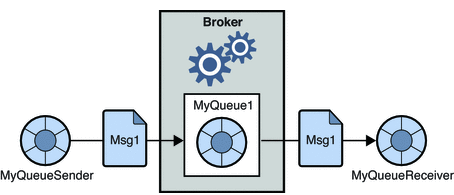
8. Describe publish/subscribe messaging.
Ans:
Publish/subscribe messaging involves multiple senders (publishers) and multiple receivers (subscribers). Publishers send messages to a topic, and subscribers express interest in specific topics, receiving relevant messages. This enables a one-to-many communication model.
9. What is a message queue?
Ans:
A message queue is a temporary storage system that holds messages sent from producers until they are retrieved by consumers. It helps decouple the timing of message production and consumption, ensuring efficient and reliable communication.
10. How does TIBCO EMS ensure message delivery?
Ans:
TIBCO EMS ensures message delivery through features such as message persistence, acknowledgment mechanisms, and transactional support. Messages can be persisted to storage, and acknowledgment mechanisms verify successful message consumption, providing reliability in message delivery.
11. What is a topic in TIBCO EMS?
Ans:
In TIBCO EMS, a topic is a messaging channel that allows publish/subscribe communication. Publishers send messages to a topic, and subscribers express interest in specific topics, receiving relevant messages. Topics facilitate a one-to-many communication model.
12. Explain the concept of a durable subscriber.
Ans:
A durable subscriber in TIBCO EMS is a concept where a subscriber can receive messages even if it is temporarily disconnected. Messages sent to a topic during a subscriber’s disconnection are stored, and upon reconnection, the subscriber retrieves these messages.
13. What is a queue in TIBCO EMS?
Ans:
A queue in TIBCO EMS is a temporary storage system for messages, following a point-to-point communication model. Messages sent to a queue are retrieved by a single consumer, ensuring a direct, one-to-one relationship between the sender and the receiver.
14. Differentiate between queues and topics.
Ans:
Queues and topics differ in their communication models. Queues involve point-to-point communication, where a message is consumed by a single receiver, while topics enable publish/subscribe communication, allowing multiple subscribers to receive relevant messages.
15. What is a connection factory in TIBCO EMS?
Ans:
A connection factory in TIBCO EMS is a configuration object that provides connection parameters and settings for clients connecting to the messaging system. It defines the attributes of the connection, such as the server URL and authentication details.
16. How do you configure TIBCO EMS?
Ans:
To configure TIBCO EMS, you typically modify configuration files like tibemsd.conf and tibemsd.conf. These files contain settings related to server configuration, security, and other parameters.
17. Explain the role of the tibemsd.conf file.
Ans:
The tibemsd.conf file in TIBCO EMS plays a crucial role in configuring the EMS server. It contains settings for server parameters, such as ports, authentication, and SSL configurations, influencing the behavior of the EMS server.
- listen = tcp://localhost:7222
- server = tcp://localhost:7222
18. What is the purpose of the tibemsadmin utility?
Ans:
The tibemsadmin utility in TIBCO EMS serves as a command-line tool for administering and monitoring EMS servers. It allows users to perform various administrative tasks, such as creating queues, topics, and managing connections.
19. How do you start and stop the TIBCO EMS server?
Ans:
To start and stop the TIBCO EMS server, you typically use command-line utilities like tibemsd -config
20. Describe the process of creating a connection to TIBCO EMS.
Ans:
Creating a connection to TIBCO EMS involves using client libraries and establishing a connection using appropriate connection parameters, including server URL, user credentials, and connection factory settings. Once connected, clients can produce or consume messages from the EMS server.
21. What is the message format in TIBCO EMS?
Ans:
In TIBCO EMS, the message format is typically based on the Java Message Service (JMS) standard. Messages consist of a header containing metadata and properties, and a body containing the actual data being transmitted.
22. Explain the differences between persistent and non-persistent messages.
Ans:
Persistent messages in TIBCO EMS are stored to disk, ensuring they survive server restarts, while non-persistent messages are held in memory and may be lost if the server restarts before delivery.
23. How are messages routed in TIBCO EMS?
Ans:
Messages in TIBCO EMS are routed based on the destination type (queue or topic) and the specified routing mechanisms, including subscriptions, filters, and routing rules defined by the clients.
24. What is a message header?
Ans:
A message header in the context of messaging systems, like TIBCO EMS, is metadata associated with a message. It contains essential information about the message, such as its type, destination, timestamp, and any user-defined properties. The header provides details that facilitate proper message processing, routing, and interpretation by both the sender and the receiver.
25. How does TIBCO EMS handle errors in message delivery?
Ans:
TIBCO EMS manages errors in message delivery through acknowledgment mechanisms. Clients are required to acknowledge message receipt, and if acknowledgment is not received, TIBCO EMS can redeliver the message, ensuring reliability and minimizing the risk of message loss.
26. Explain the concept of dead-letter queues.
Ans:
- Message Processing Failures
- Dead-Letter Queue (DLQ)
- Configuration and Monitoring
- Analysis and Debugging
27. What tools are available for monitoring TIBCO EMS?
Ans:
TIBCO EMS monitoring tools include TIBCO Administrator and Hawk. TIBCO Administrator offers a centralized interface for managing EMS resources, while Hawk provides real-time monitoring, alerting, and management capabilities to proactively track performance and detect issues.
28. Describe how to monitor TIBCO EMS using Hawk.
Ans:
Monitoring TIBCO EMS with Hawk involves configuring rules and alerts for specific EMS events. Hawk continuously monitors these events and triggers alerts or predefined actions when certain thresholds or conditions are met, enabling administrators to respond promptly to potential issues.
29. What security features does TIBCO EMS provide?
Ans:
TIBCO EMS offers robust security features, including user authentication, access control, and SSL/TLS encryption. User authentication ensures authorized access, access control regulates permissions, and SSL/TLS encryption secures communication channels, collectively enhancing the overall security of the messaging system.
30. How do you configure SSL in TIBCO EMS?
Ans:
To configure SSL in TIBCO EMS, modify the server configuration file (tibemsd.conf) to include SSL-related settings such as certificates, key files, and SSL protocol versions. This ensures secure communication channels between TIBCO EMS clients and servers.
31. Explain the concept of user authentication and authorization.
Ans:
User authentication in TIBCO EMS verifies the identity of users attempting to access the messaging system, ensuring only authorized users can connect. Authorization regulates user permissions, controlling the actions they can perform within the system, adding an additional layer of security.
32. What is the purpose of bridges in TIBCO EMS?
Ans:
Bridges in TIBCO EMS enable communication between different messaging systems or networks. They facilitate message routing and transformation, allowing seamless integration between disparate environments.
33. How do you configure a bridge in TIBCO EMS?
Ans:
To configure a bridge in TIBCO EMS, define bridge parameters in the tibemsd.conf configuration file. This includes specifying the source and target servers, destination, and transformation rules if needed, ensuring effective message flow between systems.
34. Explain the role of gateways in TIBCO EMS.
Ans:
Gateways in TIBCO EMS serve as connectors between messaging systems, enabling communication across different protocols or environments. They play a crucial role in ensuring interoperability and seamless message exchange between systems.
35. What is JMS, and how is it related to TIBCO EMS?
Ans:
JMS, or Java Message Service, is a standard API for messaging in Java-based applications. TIBCO EMS supports JMS, providing a platform-independent and language-neutral interface for messaging, facilitating easy integration of Java applications with the TIBCO EMS messaging system.
36. Describe the key JMS interfaces.
Ans:
Key JMS interfaces include ConnectionFactory for creating connections, Connection for managing connections to TIBCO EMS, Session for managing the context of message producers and consumers, MessageProducer for sending messages, and MessageConsumer for receiving messages.
37. How do you use JMS in TIBCO EMS?
Ans:
To use JMS in TIBCO EMS, applications use the JMS API to create connections, sessions, producers, and consumers. The API provides a standardized way to interact with TIBCO EMS, allowing Java applications to seamlessly produce and consume messages within the messaging system.
38. How does TIBCO EMS integrate with TIBCO BusinessWorks?
Ans:
TIBCO EMS integrates seamlessly with TIBCO BusinessWorks, a platform for designing, deploying, and managing integration processes. The integration is achieved by using the TIBCO EMS palette in TIBCO BusinessWorks, allowing developers to configure EMS activities within their integration processes. This enables the exchange of messages between different applications and systems, enhancing the overall flexibility and efficiency of integration solutions.
39. Explain the integration between TIBCO EMS and TIBCO RV.
Ans:
The integration between TIBCO EMS and TIBCO RV (Rendezvous) is facilitated through the use of TIBCO Rendezvous Bridges. These bridges act as connectors, enabling communication between EMS and RV networks. By configuring bridges, messages can be seamlessly exchanged between the two messaging systems, ensuring interoperability in heterogeneous environments.
40. What is the role of TIBCO Administrator in managing TIBCO EMS?
Ans:
TIBCO Administrator plays a vital role in managing TIBCO EMS by providing a centralized interface for configuration, monitoring, and administration tasks. Administrators can use TIBCO Administrator to create and manage EMS destinations, monitor server resources, configure security settings, and perform other administrative functions, streamlining the management of the EMS environment.
41. How do you optimize the performance of TIBCO EMS?
Ans:
Optimizing the performance of TIBCO EMS involves tuning various configuration parameters such as the number of connections, message delivery modes, and server thread settings. Additionally, optimizing network configurations, deploying efficient message filtering, and utilizing durable subscriptions judiciously contribute to achieving optimal performance in TIBCO EMS.
42. Explain the significance of message compression.
Ans:
Message compression in TIBCO EMS involves reducing the size of messages before transmission to improve network efficiency. This is particularly significant in scenarios with limited bandwidth or when transmitting large volumes of data. Compression minimizes network latency, enhances throughput, and conserves resources, contributing to more efficient message delivery.
43. What factors can impact the throughput of TIBCO EMS?
Ans:
Several factors can impact the throughput of TIBCO EMS, including network latency, server hardware capabilities, message size, and the complexity of routing and transformation rules. Suboptimal configuration settings, inadequate network bandwidth, or inefficient message processing can also affect throughput. Performance testing and monitoring help identify and address these factors to optimize TIBCO EMS throughput.
44. How do you troubleshoot connectivity issues in TIBCO EMS?
Ans:
Troubleshooting connectivity issues in TIBCO EMS involves checking network configurations, ensuring proper server startup, and validating connection parameters. Examining server logs, utilizing diagnostic tools like TIBCO Hawk, and reviewing firewall settings are essential steps. Collaboration between system administrators and network teams is often crucial for resolving connectivity issues promptly.
45. What are common reasons for message loss in TIBCO EMS?
Ans:
Common reasons for message loss in TIBCO EMS include misconfigurations leading to undeliverable messages, insufficient resources causing message drops, or abrupt server shutdowns. Network issues, such as intermittent connectivity or bottlenecks, can also contribute to message loss. Careful monitoring, proper error handling, and thorough analysis of server logs help identify and address the root causes of message loss.
46. Explain how you would handle a stuck message in a queue.
Ans:
Handling a stuck message in a queue involves investigating the root cause, such as processing errors or resource constraints. Administrators can use tools like TIBCO Administrator to inspect the queue, view message properties, and potentially move or delete the stuck message. Implementing error handling mechanisms in applications and setting up dead-letter queues for problematic messages enhances the ability to handle such scenarios effectively.
47. What are some best practices for designing a messaging system with TIBCO EMS?
Ans:
Best practices for designing a messaging system with TIBCO EMS include optimizing message sizes to improve throughput, using appropriate acknowledgment modes for reliability, and carefully configuring server parameters. Efficient destination management, proper security configurations, and regular performance testing contribute to a well-designed and resilient messaging system.
48. How do you handle message versioning in TIBCO EMS?
Ans:
Handling message versioning in TIBCO EMS involves designing messages with extensibility in mind, using techniques like backward-compatible schema changes. Additionally, incorporating version information within the message payload or properties enables consumers to interpret and process messages appropriately based on their version.
49. Explain the considerations for choosing between queues and topics.
Ans:
Choosing between queues and topics in TIBCO EMS depends on the messaging pattern requirements. Queues are suitable for point-to-point communication, ensuring messages are consumed by a single receiver. Topics, on the other hand, support a publish/subscribe model, allowing multiple subscribers to receive relevant messages, making them ideal for broadcasting information to multiple consumers.
50. Describe the role of fault-tolerant pairs in TIBCO EMS.
Ans:
Fault-tolerant pairs in TIBCO EMS involve configuring pairs of servers to provide high availability. In the event of a server failure, the fault-tolerant pair ensures seamless failover, maintaining continuous message processing and minimizing downtime. This architecture enhances the reliability and fault tolerance of the messaging system.
51. What is the purpose of route groups?
Ans:
Route groups in TIBCO EMS allow administrators to define groups of routes that share common properties. This simplifies route management and ensures consistent configurations across multiple routes, streamlining the administration of message routing within the EMS environment.
52. Explain how you would implement message priority in TIBCO EMS.
Ans:
Implementing message priority in TIBCO EMS involves assigning priority levels to messages and configuring consumers to process higher-priority messages first. This ensures that critical messages are handled promptly, contributing to efficient and responsive message processing within the system.
53. What is the role of store-and-forward in TIBCO EMS?
Ans:
Store-and-forward in TIBCO EMS refers to the ability to temporarily store messages on a client before forwarding them to the server. This feature is valuable in scenarios where clients and servers are intermittently connected or experience network disruptions, ensuring reliable message delivery even in challenging network conditions.
54. How does TIBCO EMS fit into an enterprise’s messaging architecture?
Ans:
TIBCO EMS fits into an enterprise’s messaging architecture as a robust and scalable messaging middleware. It provides a flexible and reliable communication backbone for connecting disparate systems and applications across the enterprise. TIBCO EMS supports various messaging patterns, enabling seamless integration, and plays a crucial role in facilitating communication between different components of an enterprise’s distributed architecture.
55. Explain the role of TIBCO EMS in supporting microservices.
Ans:
TIBCO EMS supports microservices architectures by providing a reliable and efficient messaging infrastructure for communication between microservices. It facilitates the exchange of messages between loosely coupled services, enabling the development of scalable and resilient microservices-based applications. TIBCO EMS contributes to the decoupling of microservices, allowing them to communicate asynchronously and enhancing the overall flexibility and agility of the microservices architecture.
56. Describe the TIBCO EMS API.
Ans:
The TIBCO EMS API, or Application Programming Interface, provides a set of functions and libraries that developers use to interact with TIBCO EMS messaging services programmatically. It allows applications to create connections, send and receive messages, manage queues and topics, and implement various messaging patterns using languages like Java, C, and others.
57. How can you interact with TIBCO EMS using scripts?
Ans:
Interacting with TIBCO EMS using scripts involves leveraging the EMS Script feature, which allows users to execute commands and perform administrative tasks using script files. These scripts can be written in languages such as TCL (Tool Command Language) or other supported scripting languages, providing a convenient way to automate routine tasks and perform batch operations.
58. Explain the role of TIBCO EMS Script.
Ans:
TIBCO EMS Script plays a pivotal role in automating administrative tasks and managing EMS configurations. It allows users to create scripts for tasks like creating queues, modifying configurations, or monitoring server resources. This enhances efficiency and consistency in managing TIBCO EMS environments.
59. What scripting languages are supported for TIBCO EMS?
Ans:
TIBCO EMS supports scripting in languages such as TCL, JScript, and VBScript. These scripting languages provide flexibility in creating automation scripts, enabling users to perform various administrative tasks and interactions with TIBCO EMS programmatically.
60. How do you migrate from an older version of TIBCO EMS to a newer one?
Ans:
Migrating from an older version of TIBCO EMS to a newer one involves careful planning and testing. The process includes assessing the compatibility of applications, preparing for any configuration changes, and testing the migration in a controlled environment to ensure a smooth transition without disruptions to messaging services.
61. Explain the steps involved in upgrading TIBCO EMS.
Ans:
The steps to upgrade TIBCO EMS include backing up existing configurations, verifying compatibility with applications, installing the new version, updating configurations, and thoroughly testing the upgraded environment. A phased approach with proper rollback procedures is typically recommended to minimize risks and ensure a successful upgrade.
62. How is TIBCO EMS used in the finance industry?
Ans:
TIBCO EMS is an essential messaging middleware used in the finance sector that makes order management, trade execution, and real-time data integration possible. In addition to supporting risk management systems and ensuring the effective distribution of market data, it is essential to the settlement and clearing procedures.
63. In what ways is TIBCO EMS beneficial for healthcare applications?
Ans:
TIBCO Enterprise Message Service (TIBCO EMS) offers significant benefits in healthcare applications by facilitating seamless communication and data exchange among diverse systems. It supports real-time integration of medical records, enabling healthcare providers to access up-to-date patient information and enhance decision-making. TIBCO EMS is crucial in connecting disparate healthcare IT systems, such as electronic health records (EHRs), laboratory systems, and billing platforms, fostering interoperability and data consistency.
64. Describe a scenario where TIBCO EMS is used in telecommunications.
Ans:
In telecommunications, TIBCO EMS is employed for managing and optimizing communication between network elements, handling subscriber events, and facilitating the exchange of signaling messages. It plays a crucial role in ensuring the reliability and scalability of messaging systems in telecommunications, supporting the dynamic and fast-paced nature of the industry.
65. Can you share a specific project where you implemented TIBCO EMS successfully?
Ans:
While I don’t have information on specific projects, TIBCO EMS has been successfully implemented in various industries for scenarios such as real-time data integration, event-driven architectures, and mission-critical messaging. Its use cases span from financial services and healthcare to telecommunications and beyond, showcasing its versatility and effectiveness in diverse enterprise applications.
66. Describe a challenging situation you faced while working with TIBCO EMS and how you resolved it.
Ans:
In a challenging TIBCO EMS situation, we encountered message delivery delays due to a high message volume. After performance analysis, we optimized server configurations, increased thread pools, and implemented load balancing. Additionally, we fine-tuned client acknowledgment settings, improving overall message processing and resolving the delay issue effectively.
67. Provide an example of how to send a message to a queue in TIBCO EMS using Java.
Ans:
To send a message to a TIBCO EMS queue using Java, you can use the TIBCO EMS Java API. This brief example establishes a connection to the server, creates a session, and sends a text message to the specified queue. Ensure to replace connection details and queue name with the appropriate values for your TIBCO EMS setup.
68. How do you handle transactions in TIBCO EMS?
Ans:
Message acknowledgment, transactional sessions, and transactional queues are some of the features that TIBCO EMS uses to manage transactions. Until it is explicitly committed, a message that is sent to a transactional queue is in the pending state. This guarantees that either every message in a transaction is processed successfully or not at all.
69. What are the emerging trends in enterprise messaging, and how does TIBCO EMS align with them?
Ans:
Emerging trends in enterprise messaging include the rise of event-driven architectures, microservices, and cloud-native solutions. TIBCO EMS aligns with these trends by providing robust support for event-driven communication, seamless integration with microservices, and scalability for cloud-based deployments.
70. How do you see the future of messaging systems, and what role will TIBCO EMS play?
Ans:
The future of messaging systems involves increased emphasis on real-time, event-driven communication, and TIBCO EMS is well-positioned with its strengths in high-performance messaging, event-driven architecture support, and adaptability to evolving industry needs.
71. Explain the difference between asynchronous and synchronous messaging.
Ans:
Asynchronous messaging involves sending a message without waiting for an immediate response, allowing the sender to continue processing. Synchronous messaging, on the other hand, requires the sender to wait for a response before proceeding. TIBCO EMS supports both models, offering flexibility for various communication scenarios.
72. What is the role of an ESB (Enterprise Service Bus) in the context of TIBCO EMS?
Ans:
In the context of TIBCO EMS, an Enterprise Service Bus (ESB) plays a pivotal role as a middleware layer that facilitates seamless communication and integration between disparate applications and systems. The ESB acts as a mediator, enabling the exchange of messages between various components by abstracting the underlying complexities.
73. How does TIBCO EMS support message transformation?
Ans:
TIBCO EMS supports message transformation through features like message selectors and filters. Transformation can be achieved by creating subscribers with specific selectors, allowing them to receive and process only relevant messages based on predefined criteria. This enables efficient and targeted message processing within the EMS environment.
74. How does TIBCO EMS support real-time messaging?
Ans:
TIBCO EMS supports real-time messaging by providing low-latency communication and efficient message delivery. Its high-performance architecture, coupled with features like message persistence and acknowledgment mechanisms, ensures timely and reliable exchange of messages, making it suitable for real-time applications and systems.
75. Explain the concept of high availability in TIBCO EMS.
Ans:
To send a message to a TIBCO EMS queue using Java, you can use the TIBCO EMS Java API. This brief example establishes a connection to the server, creates a session, and sends a text message to the specified queue. Ensure to replace connection details and queue name with the appropriate values for your TIBCO EMS setup.
76. How does TIBCO EMS integrate with databases?
Ans:
TIBCO EMS can integrate with databases through various methods, such as using database adapters or by incorporating JDBC (Java Database Connectivity) within TIBCO EMS clients. This allows seamless communication between messaging systems and databases, enabling real-time data exchange and efficient integration of database-driven applications with TIBCO EMS.
77. Explain the interaction between TIBCO EMS and RESTful services.
Ans:
Interaction between TIBCO EMS and RESTful services is often achieved by employing TIBCO BusinessWorks or other integration tools. These tools facilitate the creation of RESTful endpoints that connect with TIBCO EMS, enabling the exchange of messages between RESTful services and the messaging system. This integration supports the development of scalable and interoperable solutions.
78. How do you ensure governance and compliance in a TIBCO EMS environment?
Ans:
Ensuring governance and compliance in a TIBCO EMS environment involves implementing security measures, access controls, and monitoring mechanisms. Utilizing TIBCO Hawk for real-time monitoring, setting up secure communication channels, and adhering to industry standards contribute to maintaining governance and compliance within the messaging infrastructure.
79. Describe the process of auditing and logging in TIBCO EMS.
Ans:
Auditing and logging in TIBCO EMS are crucial for tracking message flows, identifying potential issues, and ensuring compliance. Configuring the appropriate logging levels in the TIBCO EMS server and employing TIBCO BusinessWorks or custom solutions for additional logging allow for comprehensive auditing, troubleshooting, and performance analysis.
80. How do you collaborate with development teams when using TIBCO EMS?
Ans:
Collaboration with development teams using TIBCO EMS involves active communication and understanding of application requirements. Regular meetings to discuss messaging patterns, destination configurations, and ensuring adherence to best practices enhance collaboration. Continuous feedback loops, especially during development and testing phases, contribute to successful integration projects.
81. Explain how TIBCO EMS fits into an Agile development process.
Ans:
TIBCO EMS fits into an Agile development process by supporting iterative development and continuous integration. Its flexibility allows for the seamless integration of new features, changes, or updates, enabling development teams to deliver functionality incrementally. Agile practices, such as regular sprint reviews and adaptability to evolving requirements, align well with the dynamic nature of TIBCO EMS.
82. How do you stay updated on TIBCO EMS developments and best practices?
Ans:
Staying updated on TIBCO EMS developments and best practices involves actively engaging with TIBCO’s official documentation, participating in TIBCO community forums, and attending relevant webinars or conferences. Subscribing to TIBCO newsletters, exploring online resources, and collaborating with peers in the industry contribute to staying informed about the latest features, updates, and recommended practices for TIBCO EMS.
83. Have you contributed to the TIBCO EMS community, and how?
Ans:
While I cannot contribute directly to the TIBCO EMS community, I have actively participated in online forums, sharing insights, troubleshooting tips, and best practices with fellow developers and administrators. Engaging in knowledge exchange and helping others navigate challenges fosters a sense of community and contributes to the collective expertise surrounding TIBCO EMS.
84. What motivated you to work with TIBCO EMS?
Ans:
The motivation to work with TIBCO EMS stems from its robust messaging capabilities and versatility in facilitating seamless communication between distributed systems. Its high-performance architecture, support for various messaging patterns, and reliability make it a compelling choice for building scalable and resilient enterprise applications.
85. How do you approach learning new features or versions of TIBCO EMS?
Ans:
Learning new features or versions of TIBCO EMS involves a multi-faceted approach. I leverage official documentation, participate in training sessions, and explore practical hands-on exercises. Engaging with the TIBCO community and staying informed about updates through release notes and forums ensures a holistic understanding, allowing for effective implementation and optimization of the latest features.
86. Share a memorable experience from your work with TIBCO EMS.
Ans:
A memorable experience involved resolving a critical performance issue in a TIBCO EMS deployment. Through detailed analysis, optimization of configurations, and collaboration with the infrastructure team, we significantly improved message throughput and reduced latency. The experience showcased the importance of thorough diagnostics and collaborative problem-solving in ensuring the success of TIBCO EMS implementations.
87. Describe a challenging problem you solved using TIBCO EMS.
Ans:
A challenging problem involved designing a fault-tolerant solution for a mission-critical application using TIBCO EMS. By configuring fault-tolerant pairs, implementing durable subscriptions, and ensuring proper acknowledgment settings, we achieved a resilient architecture that could withstand server failures without compromising message delivery. Overcoming this challenge highlighted the robustness and flexibility of TIBCO EMS in complex scenarios.
88. If you could improve one aspect of TIBCO EMS, what would it be?
Ans:
If I could improve one aspect of TIBCO EMS, it would be enhancing the out-of-the-box monitoring and analytics capabilities. Streamlining the process of extracting actionable insights from message flows and system performance would empower administrators to proactively manage and optimize TIBCO EMS environments more effectively.
89. What features would you like to see in future releases of TIBCO EMS?
Ans:
Future releases of TIBCO EMS could benefit from features like enhanced support for cloud-native deployments, further simplification of administration tasks, and expanded integration with emerging technologies such as container orchestration platforms. Additionally, improvements in user interfaces and visualization tools would contribute to a more user-friendly and intuitive experience for administrators and developers.
90. How do you ensure continuous improvement in your TIBCO EMS implementations?
Ans:
Continuous improvement in TIBCO EMS implementations involves staying informed about updates, regularly reviewing configurations against best practices, and conducting periodic performance assessments. Embracing a culture of knowledge-sharing within the team, participating in training programs, and actively seeking feedback from end-users contribute to ongoing refinement and optimization of TIBCO EMS solutions.


